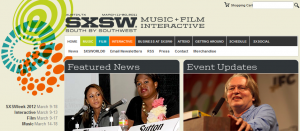 I’ve been thinking of what to do at SXSW Interactive next year around Biology.
I’ve been thinking of what to do at SXSW Interactive next year around Biology.
Biology at SXSW? It’s not as far-fetched as you’d think. The trends I see are the new bio hackspaces popping up, all the open source feeling around sharing bio tools, and so much discussion around design in biology. While SXSW Interactive is really a digerati mecca, I think there’s space for spill over into biology.
And it’s not like SXSW hasn’t been courting the scientists. For example, in 2010, there was a panel on citizen science. Then in 2011, Craig Center spoke and there was a panel on biomimicry.
My current (very unformed) thoughts are that we could have a Designing Biology panel, covering synthbio, synthetic aesthetics, DIYbio, practical microbiology, folks biology, and food design. If we want to go further, we could organize some sort of workshop with folks from GenSpace, BioCurious, or the BioBus doing what they do well – getting folks excited about Biology (maybe even at a local Uni in case the BioBus can’t be there). We could also have a screening party of bio vids, such as the Synthbio Documentary.
Ambitious? Absolutely. But we need to shoot for something. And seems this might end up with many moving parts and need proper project management, marketing, and so forth (cross that bridge when we get there).
What do you folks think? Suggestions and comments, please!
I want to at least suggest something for the SXSW panel picker by July 15th (unless someone has already suggested something).

